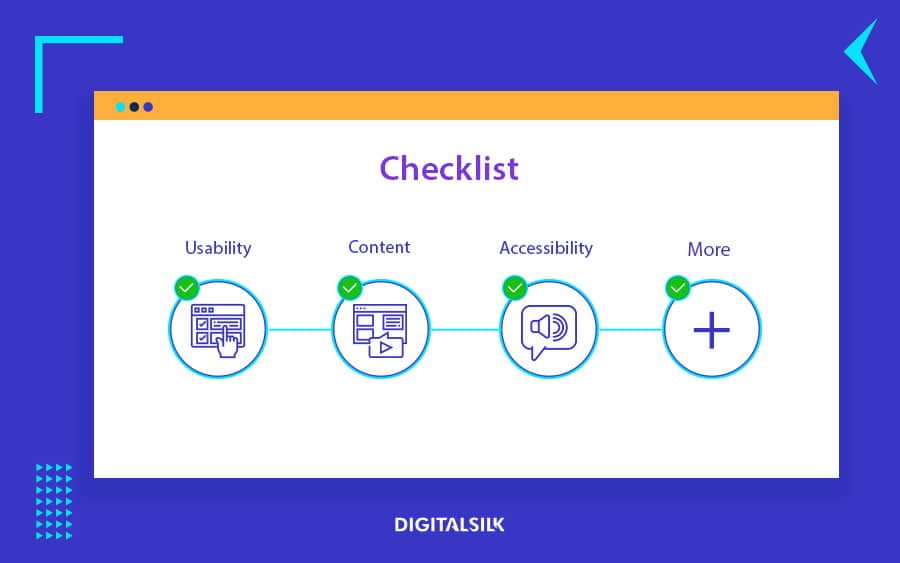The Ultimate Website Checklist: Ensuring Success Online
Introduction
For people, corporations, and organizations alike, it is crucial to have a website that is both well-designed and useful in this day and age of digital technological advancement. The purpose of your website is to act as your online storefront, giving visitors a glimpse into who you are and what you have to offer. The implementation of a complete checklist that addresses all aspects of web development, from design to functioning, is absolutely necessary if you want to make certain that your website is a success. Presented for your perusal is the definitive website checklist that will lead you through the process.
Pre-Development Phase
Define Your Goals
Before you begin the process of developing your website, you should first clearly outline your aims and objectives. Establish the goals that you wish to accomplish with your website, whether it be the generation of leads, the increase of sales, or the dissemination of information. Having a clear understanding of your objectives will assist in shaping the design and operation of your website.
Research Your Audience
To create a website that resonates with your visitors, it is essential to have a solid understanding of your target audience. It is important to conduct market research in order to get insights into the demographics, interests, and online behavior of your audience. Put this information to use in order to modify your content and design so that it caters to their tastes and requirements.
Choose the Right Platform
In order to ensure the success of your website, it is essential to choose the appropriate platform. When deciding between content management systems (CMS) such as WordPress, Joomla, or Drupal and website builders such as Wix, Squarespace, or Shopify, it is important to take into consideration a number of variables, including the simplicity of use, the extent of customization choices, the scalability, and the cost.

Design and Development Phase
Responsive Design
You should make sure that your website is responsive, which means that it can easily adjust itself to different screen sizes and devices. Because of the growing prevalence of mobile devices, it is necessary to have a design that is responsive in order to provide the best possible user experience and to improve the search engine rankings of your website. Find out more here.
Clear Navigation
Construct a navigation structure that is straightforward to understand and that makes it simple for visitors to locate the information they are looking for. You should use informative labels for navigation menus and links, and you should organize your information in a logical manner. Having a navigation system that is easy to understand improves the user experience and lowers bounce rates.
Optimized Content
Develop content that is of high quality, engaging, and that resonates with the audience you are trying to reach. If you want to boost your material’s visibility in search engines, you should strategically incorporate important keywords throughout your text. It is possible to create material that is both visually beautiful and easy to consume by utilizing a combination of text, graphics, and multimedia.
Testing and Launch Phase
Browser Compatibility
Run tests on your website using a variety of browsers and devices to check that it is compatible and consistent across all of them. The most common web browsers, including Google Chrome, Mozilla Firefox, Safari, and Microsoft Edge, should all successfully function and show your website in the correct manner.

Performance Optimization
Enhance the performance of your website by reducing the amount of time it takes for pages to load and by increasing page speed. It is possible to improve efficiency and give a seamless user experience by compressing pictures, minifying code, and making advantage of browser caching functionality.
Security Measures
To protect your website and the people who visit it from potential cyberattacks, you should implement stringent security measures. You should make use of robust passwords, install SSL certificates to encrypt data transmission, and update your content management system (CMS) and plugins on a regular basis to correct any security holes.
Post-Launch Phase
Analytics Tracking
In order to monitor the performance of your website and the behavior of visitors, you should set up analytics tracking. Tracking metrics such as traffic, engagement, and conversion rates can be accomplished with the use of technologies such as Google Analytics. want this data to find parts of your website that could want improvement, and then optimize it in accordance with those areas.
Continuous Updates

Your website should be updated on a regular basis with new material, new features, and security patches in order to maintain its relevance and ensure its safety. By paying attention to the comments and suggestions made by users, you can improve the overall user experience and move closer to accomplishing your objectives.
Marketing and Promotion
There are several other avenues via which you can promote your website, such as search engine optimization (SEO), email marketing, and social media platform marketing. Through the dissemination of excellent information, interaction with your audience, and optimization of your website for search engines, you may strengthen your online presence and bring in a greater number of visitors.
Conclusion
By adhering to this exhaustive website checklist, you will be able to establish a prosperous online presence that successfully conveys the message of your business, engages your audience, and generates results. Be sure to remember to regularly analyze and optimize your website in order to accommodate shifting trends and satisfy the ever-evolving requirements of your users. Your website has the potential to become a significant asset that helps to your overall success online if you employ the appropriate approach and carry it out effectively.





